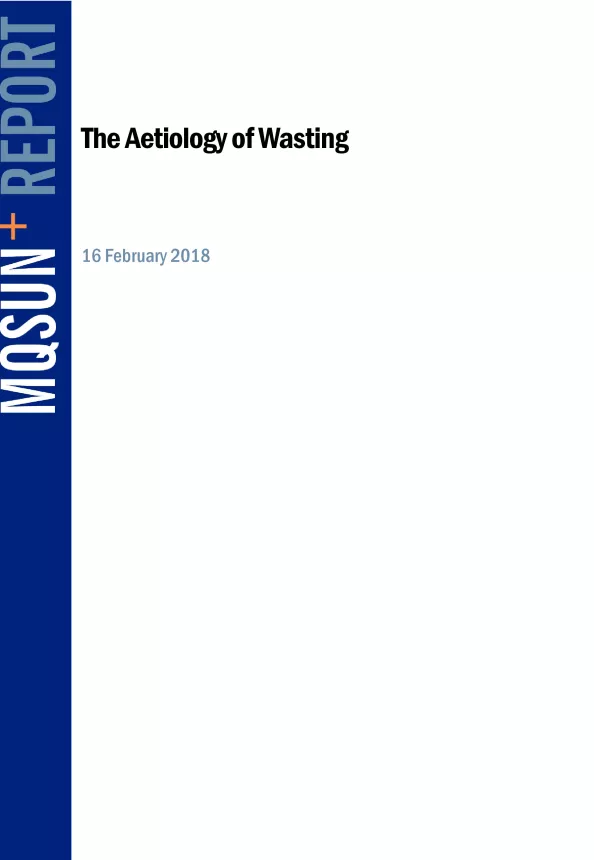The Aetiology of Wasting
Publication details
This briefing note has been prepared by ENN to provide a summary of the current state of thinking on wasting prevention. It describes current knowledge/thinking on the aetiology (causality) and physiology of wasting.
Executive Summary
Although wasting is commonly considered an acute condition because it can be relatively rapid in onset and resolution compared to other manifestations of undernutrition, the immediate or underlying factors that drive wasting are long-standing in nature. In considering wasting, we must look beyond the standard World Health Organization (WHO) definition to additional measures that identify nutritional vulnerability and risk of death. In order to better understand wasting aetiology, we need to consider its dynamic nature (incidence), seasonal patterns and its relationship with previous wasting and other deficits, in particular stunting. Our knowledge of the physiology of wasting is still limited, although evidence suggests that associated metabolic disturbances continue beyond the episode of wasting, leading to increased vulnerability to repeated periods of wasting and subsequent stunting. We therefore need to prevent and catch wasting (faltering/loss of weight) early to both maximise survival and prevent longer-term deleterious effects impairing the child's ability to thrive. Analysis of risk factors for wasting in different contexts concludes that there are multiple risk factors at play, that the combination changes over time and with the age of the child and that these factors interact with each other. Therefore, although there are some usual suspects, good context-specific causal analysis that maps pathways to wasting over time is required to inform the design of appropriate packages of interventions to prevent wasting effectively. It is clear that risk of wasting originates from the early stages of a child's development (including in utero) and that these early experiences continue to influence wasting and the associated risk of death / poor development throughout childhood. This highlights the need to act to address these early determinants (through support to adolescents and women) to support optimal foetal development and infant feeding to reduce the burden of childhood wasting and the associated risks. A number of key research questions arise in relation to wasting aetiology specifically. These include the following: Why are boys consistently more at risk of wasting than girls? What mechanisms lead one child down the pathway to wasting compared to another child born into the same impoverished conditions? How and to what extent does in utero experience amplify risk of wasting in response to external factors during infancy and childhood? The growing evidence base demonstrating the association between wasting and stunting, the overlap of risk factors and the multiplicative effect of dual deficits on mortality risk points to the need for joint strategies for identification of risk and for prevention. It is time to reconceptualise how we deal with different forms of malnutrition, to forge a joined-up approach centred on degrees of vulnerability to death and impaired development. A new framework would aim to prevent periods of nutritional vulnerability, including during pregnancy and the first six months of life, from leading to progressively more at-risk children, both in the short- and long-term.
